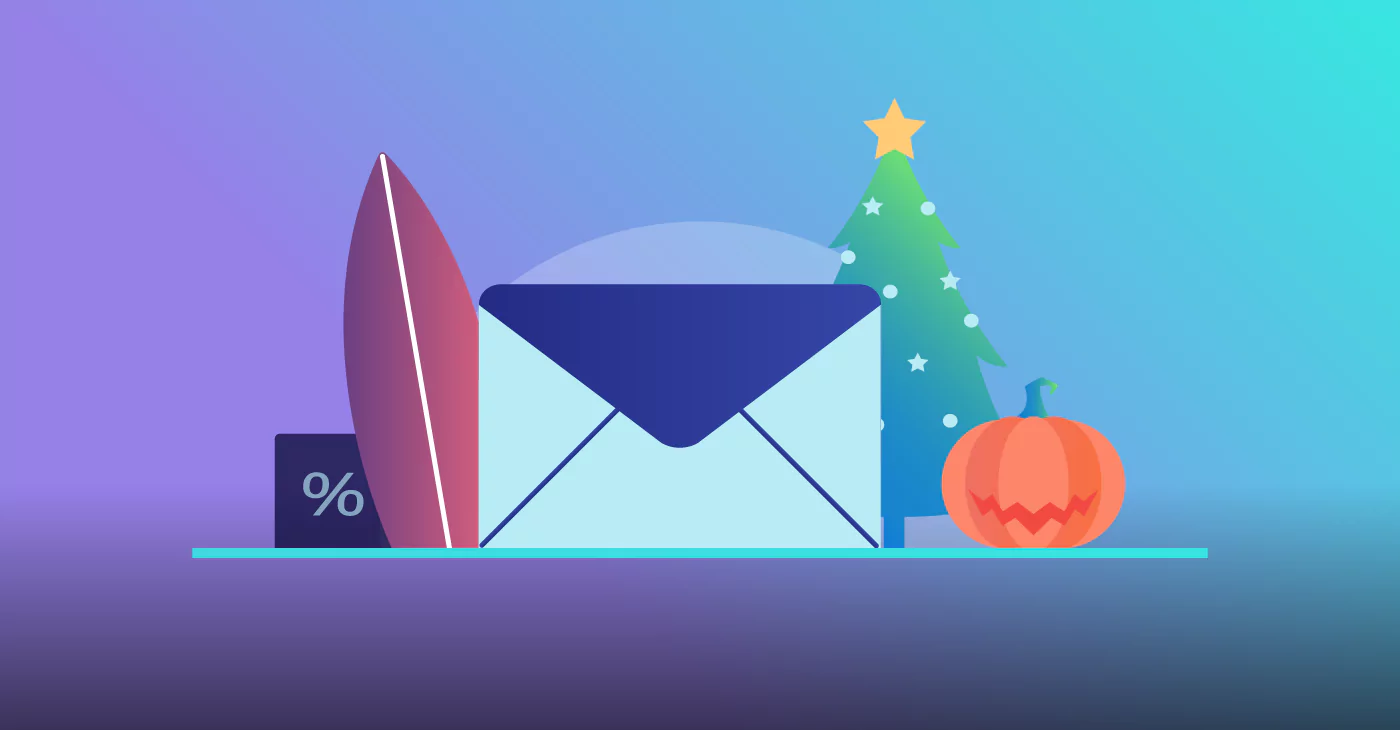
No one likes a pushy salesperson. The feeling of being roped into buying something leaves a bad taste in anyone’s mouth, and it isn’t a great way for businesses to create long-lasting partnerships with new customers.
Nowadays, customers want to feel fully informed and in control of their purchase decisions. They crave education and resources to help them determine if the product or service they’re looking for is the right one. That’s why inbound marketing is such a popular and effective tactic.
What is Inbound Marketing?
Inbound marketing is a way of expanding your business by cultivating meaningful, long-term connections with your customers and prospects. Unlike outbound marketing methods that focus on grabbing the attention of people, inbound marketing uses a more targeted approach on an individual level. Your brand grows only when your customers succeed.
To help you make the most out of this marketing strategy, we’re bringing you a beginner’s inbound marketing guide, chock full of tips and tricks to make your efforts successful. Let’s get started.
The Three Stages of Inbound Marketing
There are essentially three stages of inbound marketing, which are also considered the buyer’s journey. These three stages present you with different touch-point opportunities.
Attracting: Attracting the appropriate individuals by providing great material and engaging in dialogues that position you as a trustworthy adviser with whoever they like to work with.
Content production and management are related to inbound marketing methods that appeal to your target audience and customer profiles.
Create and distribute valuable material in different formats, such as long-read blog posts, content offerings, and social media content, in order to connect with customers. Guides and instructive manuals on how to make the best out of your services or products, details on how the solutions that you are providing can address their problems, client reviews, and data on specials or reductions are a few ideas.
Optimize all of your content using an SEO strategy. You’ll need to target certain keywords and phrases with higher search volumes connected to your goods or services as part of your SEO plan, but doing so successfully will get your content in front of the right people and lead them back to your website.
Engaging: Providing insights and strategies that are relevant to your audiences’ pain areas and objectives, which will increase their likelihood of purchasing from you.
When employing inbound marketing strategies, be sure that you’re building a connection with prospective clients and existing customers. Don’t just focus on selling; focus on really engaging with them so you can fully understand their needs.
Pay attention to how the customer service department of your company handles calls from prospective clients. Also, make sure you’re offering solutions instead of only products. This will guarantee that all transactions result in mutual agreements that benefit both parties.
Delighting: Providing ongoing assistance and support to your consumers, ensuring their transaction is a pleasant experience.
Inbound marketing methods that delight consumers guarantee that they are pleased, content, and get support even after buying a product. These methods turn your employees into consultants who are present to help the clients at any given instance.
Support your consumers by using intelligent, timed chatbots and assessments to aid, support, and collect feedback from them. Bots, assessments, and customer surveys must be delivered at certain times along the entire customer lifecycle to make sure that they make sense and are useful.
When your clients succeed and tell other people in their circles about it, it draws additional new customers to your company, building up a self-sustaining machine that can lead to massive growth.
The Difference Between Inbound and Outbound Marketing
While outbound marketing includes contacting customers to pique their purchase intention, inbound marketing, on the other hand, focuses on developing and disseminating content that attracts traffic to websites.
Outbound marketing takes a more assertive, broad-brush approach, with the hope that some of the individuals who see it would convert. Inbound marketing techniques are more subtle, focusing on persuading a certain set of people to purchase things.
Let’s take a closer look at each approach, as well as the pros and cons.
Inbound Marketing
A majority of customers start their purchasing trip online. To meet demand or address an issue, they start by looking for goods, services, or information. So, your material must describe how your goods or services will fix their problems or meet their demands.
This may be accomplished in a variety of methods, including long and short-form blog posts, articles, video content, handbooks, and more. Product evaluations, incredible testimonials, affordable pricing, and stellar reviews may all be incorporated into your podcast, online posts, or reports. Remember that interested prospective buyers ought to get intelligent material at various stages of their purchasing journey that vary in content but is consistent in tone.
Pros:
- Prospects are free to check out your blog postings or attend webinars that you host according to their own time and schedules.
- Inbound marketing material is informative, and it’s tailored to each level of the sales cycle, making consumers feel informed.
- Inbound marketing is measurable. You can track the source of your site traffic, how well your site does at converting visitors to leads, and if your emails are being opened, engaged with, and converting leads to customers.
Cons:
- Inbound marketing necessitates ongoing maintenance and updates to guarantee that content remains relevant to customers’ changing desires and demands.
- Inbound marketers are required to invest a lot of time and attention into creating and deploying different types of material to attract clients to convert.
Outbound Marketing
Outbound marketing involves communicating with a large number of individuals with the goal of converting them into customers. Traditional marketing methods such as cold emails, conferences, seminars, billboards, banners, cold calling, newspaper ads, and radio are generally connected with outbound marketing. Outbound marketing can be used with more current technologies, such as PPC advertising and spamming emails.
Pros:
- Outbound marketing raises brand recognition by allowing you to reach out to users who have never heard of your goods or services.
Cons:
- Outbound marketing can be less successful since its approach isn’t rooted in personalization.
- Consumers may block out outbound marketing; many individuals turn off the Television during advertisements or toss or discard their spam emails right away.
- It can be expensive. Traveling a lot to trade events, paying a fortune for banner-based advertisements, and renting billboard locations all add up.
Inbound Marketing Best Practices
1. Define Your Marketing Objective
This may seem self-evident, but it is frequently overlooked. You must first determine your genuine objectives before you even start creating fantastic inbound material and find yourself drowning in new leads. Otherwise, there’s a strong chance you will lose your sense of direction.
Some objectives can include:
2. Have a Consistent Brand Voice
The significance of your brand voice in inbound marketing methods is also very common and often overlooked. Since you want people to rely on and regard your brand as a subject matter expert, having consistency is one of the basic concepts of inbound marketing. Even if you have a lot of expertise, if your company doesn’t have a consistent voice and the material you provide is a jumble of colors and fonts and messages, you’ll have a hard time appearing as a reliable expert.
Make sure you establish branding guidelines and a tone for your content. Having a bit of a personality can work in your favor, so don’t be afraid to be less buttoned-up if you think that will speak to your audience better.
3. Establish Personas to Better Understand Your Audience
Audience personas are individualized composites of your target audience, replete with tastes and preferences, demographics, habits, and pain areas. Refer to all the consumer data you can collect to construct powerful personas—analytics, social data, purchase stats, and, most importantly, real customer input gathered via conducting interviews and surveys.
4. Conduct Keyword Research and Content Optimization for SEO
People find your web pages because of effective SEO, which is impossible to do without thorough keyword research. Take your time to figure out what fundamental and structural search phrases your customer personas use, then optimize the content on your website to match them. This will help you develop a solid SEO foundation and have a good impact on your inbound marketing strategy.
5. Keep an Eye on Your Competitors
You’ve spent time defining your personalities and plotting their paths. You must presume that your competitors have followed suit. Keep a record of the many sorts of material they provide, how everything is distributed, and the personas they’re targeting.
You don’t want to be a copycat, but it’s helpful to know what your competitors are doing so you can see if similar approaches work for your brand as well. Keeping an eye on competitors is also a great way to keep you one step ahead so you can maintain an edge.
6. Create Pages that are Optimized for Mobile Devices
Your site, as well as your company’s blog, must be mobile responsive. Mobile devices are being used more for online searches than ever before. As a result, your web pages and email marketing should render well on phones and other portable devices to work for the demographic majority. The last thing you want is to lose a potential lead or customer because they cannot read through your website content on their phones.
7. Maintain a Strong Social Media Presence
A strong presence on social media can boost your website traffic and draw more readership towards your blog content.
Furthermore, social platforms enable you to communicate with a huge audience of engaged individuals, increasing your exposure and providing an excellent chance to learn more about your core demographic. A consistent social media presence can help you grow your business and maintain a strong brand voice, as mentioned earlier.
If you aren’t currently invested in a strong inbound marketing approach, then I hope this article has helped change your tune. Inbound marketing is a great way to draw leads to your site, engage with them, and convert them into customers without being too pushy or aggressive. It’s a win-win!
Author Bio
Vaibhav Kakkar is the Founder and CEO of Digital Web Solutions, a globally trusted agency with a full suite of digital marketing services and development solutions.







